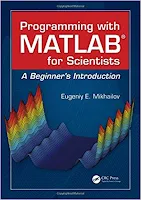Introduction to Nonlinear Optimization with MATLAB
Amir Beck ... 294 pages - Publisher: SIAM-Society for Industrial and Applied Mathematics; (October, 2014) ... Language: English - ISBN-10: 1611973643 - ISBN-13: 978-1611973648 ...
This book provides the foundations of the theory of nonlinear optimization as well as some related algorithms and presents a variety of applications from diverse areas of applied sciences. The author combines three pillars of optimization-theoretical and algorithmic foundation, familiarity with various applications, and the ability to apply the theory and algorithms on actual problems-and rigorously and gradually builds the connection between theory, algorithms, applications, and implementation. Readers will find more than 170 theoretical, algorithmic, and numerical exercises that deepen and enhance the reader's understanding of the topics. The author includes several subjects not typically found in optimization books-for example, optimality conditions in sparsity-constrained optimization, hidden convexity, and total least squares. The book also offers a large number of applications discussed theoretically and algorithmically, such as circle fitting, Chebyshev center, the Fermat-Weber problem, denoising, clustering, total least squares, and orthogonal regression and theoretical and algorithmic topics demonstrated by the MATLAB toolbox CVX and a package of m-files that is posted on the book's web site.
This book provides the foundations of the theory of nonlinear optimization as well as some related algorithms and presents a variety of applications from diverse areas of applied sciences. The author combines three pillars of optimization-theoretical and algorithmic foundation, familiarity with various applications, and the ability to apply the theory and algorithms on actual problems-and rigorously and gradually builds the connection between theory, algorithms, applications, and implementation. Readers will find more than 170 theoretical, algorithmic, and numerical exercises that deepen and enhance the reader's understanding of the topics. The author includes several subjects not typically found in optimization books-for example, optimality conditions in sparsity-constrained optimization, hidden convexity, and total least squares. The book also offers a large number of applications discussed theoretically and algorithmically, such as circle fitting, Chebyshev center, the Fermat-Weber problem, denoising, clustering, total least squares, and orthogonal regression and theoretical and algorithmic topics demonstrated by the MATLAB toolbox CVX and a package of m-files that is posted on the book's web site.



















